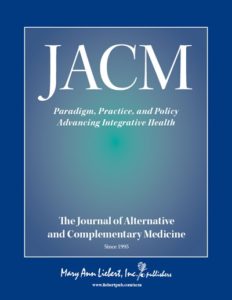By Deepak Chopra™ MD and Wayne Jonas, MD
The COVID-19 crisis has exposed so many fault lines in the U.S. that a call for a reset has sprung up. Years of reckless attacks on the government’s emergency response to a pandemic, and neglect of our public health infrastructure left us unprepared to handle COVID. Now that two vaccines offer hope, with a third or more on the way, the pandemic might become a disaster viewed in the rearview mirror. If it should fade, let’s not forget the important lessons it has taught us for what changes are needed in healthcare to prevent damage from future epidemics.
We can do much better. The CDC reported earlier this year that 90 percent of those hospitalized from coronavirus had underlying chronic health issues such as hypertension, obesity, diabetes, chronic lung and cardiovascular disease. Many are African-American. Many are old and poor. Their plight existed, and was getting worse, before the pandemic shone a glaring spotlight on the tragedies that are caused, in the final analysis, by the system itself.
Rife with political infighting, soaring costs in hospital care and even everyday outpatient care, U.S. health care is shielded behind its triumphs for the acute manifestations of disease, which are worth praising. We have the best ER care in the world, the best advanced medical research, top medical schools, and the best pharmaceutical companies – all focused on recue medicine once disease is advanced.
But behind this impressive shield there is a very real threat of declining wellness and shortened lifespan in this country. As always, following the money gets you to the centers of power. Those who make money from the system as it is, like big pharma and insurance companies, have no incentive to reduce health care costs or prevent disease. The trail also leads to Congress, which is conflicted by money that flows through lobbying to health-care legislation that further benefits the industry as is. What is good for the public often comes second, if at all.
The weakest fault line in the U.S. system is management of chronic or lifestyle disease like heart disease, hypertension, obesity and type 2 diabetes, to which should be added the epidemic of pain and opioid misuse. You cannot monetize prevention and wellness, which is why the system kicks in only when immediate action is called for, generally at the ER and in the hospital. If things had been any different, the death rates from COVID-19 would be much lower and intensive care units would not be as overwhelmed as they are now.
Let’s not make the same mistake we made with the opioid epidemic. In the 1990s, while some leaders at National Institutes of Health were advocating an increase in research on drug-free treatments for pain, including acupuncture, yoga and mind-body practices, mainstream medicine rejected such concepts and basically embraced the use of opioids as a blanket treatment for pain. The opioid epidemic began as a mindset before the first prescription for OxyContin was written.
Now we are scrambling to adopt what was sensible and safe to begin with. The American College of Physicians offers guidelines encouraging the use of acupuncture, yoga and mind-body practices in lieu of opioid prescriptions for chronic pain management. But our system was not built to deliver or pay for these approaches. Not only is it easier for a doctor to write a prescription, but we must face the grim realization that OxyContin was touted as non-addictive, shamefully suppressing research that showed it was.
The only change that will get us out of this morass is a reset of attitudes, beliefs, and outworn habits. In other words, a change in our consciousness. The U.S. military and Veterans Administration have already embraced a whole person, integrative health approach to care because they have a vested interest in reducing costs and having resilient, healthy military communities. That’s a start.
But a wholesale reset requires that we stop thinking in outmoded, inefficient ways and shift to concepts that will sink into the awareness of the whole country.
- Prevention, which is risk-based, needs to shift to wellbeing, which is a positive lifelong goal.
- Whole-person approaches need to replace the targeted treatment of symptoms.
- People need to take an active role in their self-care and wellbeing with support and expert advice from health professionals.
- Chronic illness needs to be understood as a process that takes years, even decades to develop. The earliest prevention is also the easiest and most effective way to manage disease.
- Mainstream medicine must shift to a whole person, integrative health approach that promotes and produces health and lifelong wellbeing
Looking at this list, you can see that the reset is not difficult for anyone at the individual level. You don’t have to wait for government, lobbyists, big pharma, or even your local hospital to lead the way. Nothing changes until you are aware of it. Making yourself aware of healthy choices is so basic that millions of people already have taken. We need a medical system that supports this.


